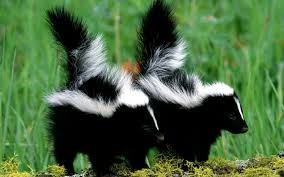In the Ron Paul Curriculum 7th grade english literature course many literary elements have been discussed and studied.
Horror. Comedy. Fiction. Non-fiction. These are a few examples of genre, the categories for a style literature. There are two main genres, fiction and non-fiction. Fiction is based on imaginary figures. It is written in prose, describing imaginary events and people. Fantasy, historical fiction, science fiction, mythology and more fall into the fiction genre. Others fall into the non-fiction genre, such as biographies and autobiographies. Non-fiction is prose writing based on real people, real events, and facts.
Horror is written to give an intense feeling of fear and shock and to scare and frighten the audience. Edgar Allan Poe’s book ‘The Tell Tale Heart’ is a great example of horror writing. Allegory is a genre of literature where the characters represent someone or something else. ‘The Lion, The Witch, and The Wardrobe’ written by C. S. Lewis is placed in the allegory category. Allegory has a hidden meaning or moral. Comedy is written to make the audience laugh. ‘Ramona and Beezus’ by Beverly Cleary is a comedy book. Science fiction uses science to drive the plot. It is often set in space or in the future. Set in space in the future, ‘Star Wars’ by George Lucas is a very popular example. Satire is written to make the audience want to change something in their lives for the better. ‘Gulliver’s Travels’ written by Jonathan Swift is an example of satire. Historical fiction uses real historical events and people to drive the plot. ‘The Dragon and The Raven’ by G. A. Henty is a historical fiction book. Fantasy, mythology, and fables are several other genres. The ‘Harry Potter’ series by J.K. Rowling would be an example of fantasy.
There are five sections of fiction. The first one is the theme. Theme is the subject of a piece of writing or entertainment. The second is character development. Character development is the description of who the character is and who they become and other background information. The third part is the authors style. The authors style is the way that the author presents the characters and details, and how he or she writes the dialogue. The fourth part of fiction is the setting. The setting is the description of the surroundings of the event that is taking place in the story. It includes the time, the place, and the backdrop. The fifth and last section is the plot. It is the main section of most stories.
The plot can get broken down into five sub-sections. The first is the exposition. The exposition is the beginning of the writing. It introduces the main characters, the ultimate conflict, the setting, and more. Secondly is the rising action. The rising action is the section of the story that builds up the conflict. The third is the climax. The climax is the hight of the writing. The fifth is the falling action. The falling action is the section of the story where all of the pieces of the big puzzle fall into place.
Other literary elements of style are necessary to make the writing interesting. Juxtaposition is the combination of opposite things for a contrasting effect. ‘A Connecticut Yankee in King Arthur’s Court’ written by Mark Twain is a great example of juxtaposition. A yankee from Connecticut travels through time to King Arthur. Juxtaposition is a mixture of different objects to make the literature more interesting. Milieu is a persons social environment. It is the history, setting, and other people around a character. Tone is the way or attitude in which a story is told or written. The fourth vocabulary word is customs. Customs are what people do or are like during a specific time period. Satire is to use humor and exaggeration to criticize people or the cultures stupidity. It is also the name for any sort of literature or entertainment that uses satire. Visualization is using the setting description and scenery details to create a picture in your mind of what is happening in the story. Mood is the atmosphere or the feeling that the setting creates. Characterization is the way that the author presents the characters in the story. It can be direct or indirect. Dialogue is the communication between two characters. It is the spoken words of two or more characters within a narrative. Prose is everyday speech.
There are five book types. A novel is a fictitious prose narrative. A novella is book that has a theme and plot but is shorter than novel. A poem is piece of writing that is both speech and song. A short story is a book that has a fully developed theme but is not as elaborate as a novel. A drama is a book made up mostly of dialogue. These are often made into plays and are performed. For example, Shakespeare was a drama writer.
Through the study of the many genres, the types of fiction, various vocabulary words, and different types of books, the elements of writing and literature were learned.



